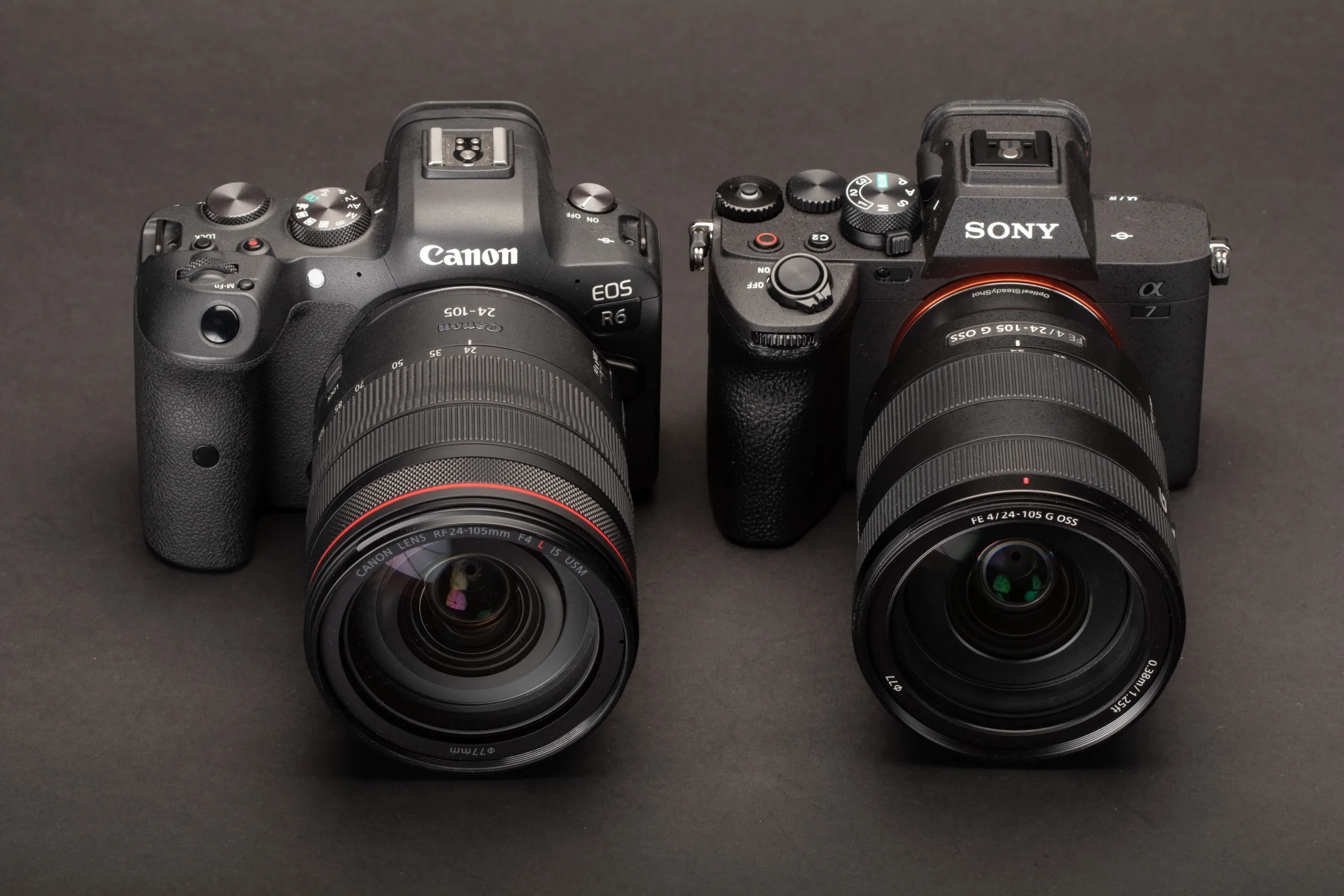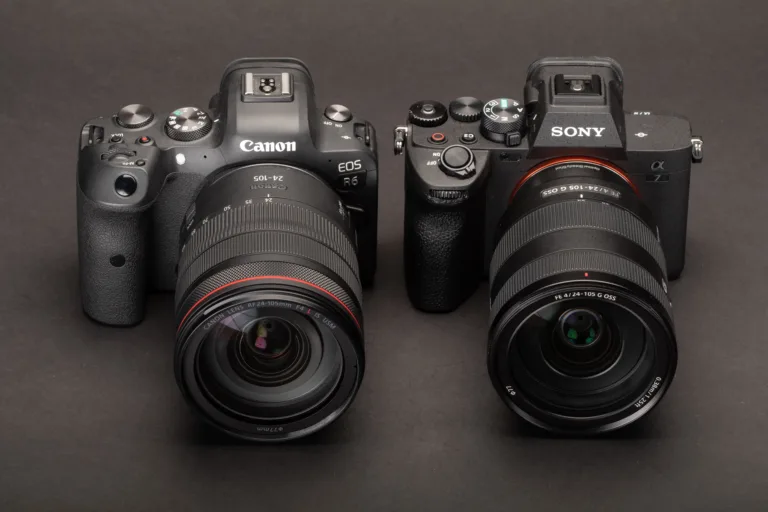
21 Oct Canon vs Sony

Why Canon is Better than Sony for Photography: A Comprehensive Guide
1. Superior Color Science: Canon’s Winning Formula
One of the primary reasons Canon cameras are often favored over Sony is their superior color science. Canon has developed a reputation for producing images with more natural, vibrant, and accurate colors straight out of the camera. This is crucial for portrait photographers, wedding photographers, and anyone who prioritizes skin tones and rich colors in their work.
- Canon Colors: Canon’s JPEG processing and color rendering offer smoother tones, which reduces the need for extensive post-processing.
- Skin Tone Accuracy: Canon consistently delivers pleasing and true-to-life skin tones, making it a go-to for portrait photographers.
2. Lens Selection: Canon’s Extensive and Versatile Options
Another reason Canon is better than Sony for photography is the vast selection of lenses. Canon has been in the camera game for decades, and their range of lenses reflects that. Whether you’re a beginner looking for a simple kit lens or a professional seeking high-end prime or telephoto lenses, Canon has you covered.
- Canon RF and EF Lenses: Canon’s EF and RF lens mount systems** offer a wide variety of lenses for every photography genre—landscape, macro, sports, and portrait.
- Third-Party Compatibility: Canon’s long-standing dominance means that third-party manufacturers like Sigma and Tamron also produce a wide range of compatible lenses for Canon users.
- Sony’s Lens System: While Sony’s E-mount lenses are high-quality, they don’t offer as extensive a selection, particularly in specialized areas like tilt-shift and affordable telephoto options.
3. User-Friendly Design and Ergonomics: Canon Wins on Comfort
Canon cameras are renowned for their ergonomics and ease of use. Whether you’re holding an entry-level DSLR or a high-end mirrorless body, Canon’s design prioritizes comfort and accessibility. This is especially important for photographers who spend long hours shooting in the field or at events.
- Intuitive Controls: Canon’s button layout, menus, and touchscreen interfaces are generally more intuitive and easier to navigate than Sony’s. This means less time fumbling through settings and more time capturing the perfect shot.
- Grip Design: Canon cameras are often praised for their comfortable grips, which provide better handling, especially with larger lenses attached. Sony cameras, in comparison, have been criticized for their smaller, more awkward grip designs, which can make long shoots tiring.
4. Battery Life: Canon Delivers More Power
When it comes to battery life, Canon also has the upper hand. Whether you’re shooting with a DSLR or mirrorless camera, Canon consistently offers better battery performance, meaning more shots per charge. For event photographers, wedding photographers, and videographers, this can make a huge difference during long shoots.
- Canon DSLR Battery Life: Canon’s DSLRs, like the EOS 5D Mark IV, deliver exceptional battery life, often surpassing Sony’s mirrorless models.
- Mirrorless Battery Performance: Canon’s newer mirrorless models, such as the EOS R5 and EOS R6, offer more efficient battery life compared to Sony’s Alpha series cameras.
5. Autofocus Performance: Canon’s Speed and Precision
Canon has significantly improved its autofocus system, especially with the introduction of the Dual Pixel AF technology in its mirrorless and DSLR models. This system provides fast, accurate, and smooth autofocus, making Canon a strong contender in action, sports, and wildlife photography.
- Dual Pixel AF: Canon’s Dual Pixel AF offers fast and reliable autofocus during both still photography and video shooting, ensuring sharp images even when dealing with moving subjects.
- Eye-Tracking Technology: Canon’s eye-tracking autofocus is also more refined in certain models, ensuring sharp focus on a subject’s eyes, which is particularly important for portrait and wildlife photography.
6. Video Capabilities: Canon for Cinematic Quality
While Sony is known for its prowess in video, particularly in its Alpha series, Canon still holds its own in this domain with its Cinema EOS line and the mirrorless EOS R5 and EOS R6 models. Canon is favored by many filmmakers and videographers for its color science and reliable autofocus during video shoots.
- Canon EOS R5 & R6: These models offer 4K and 8K video recording capabilities, along with Dual Pixel AF that works exceptionally well for video content creators.
- Canon’s Color Science in Video: Just like with stills, Canon’s color science in video is hard to beat, delivering stunning cinematic footage without heavy post-production.
Conclusion: Canon Takes the Lead
In the Canon vs. Sony debate, Canon proves to be the better choice for photographers who value natural color rendering, a vast lens selection, user-friendly design, reliable autofocus, and long battery life. While Sony cameras are undeniably excellent, especially for tech enthusiasts, Canon provides a more well-rounded, user-centric experience that appeals to a broader range of photographers—from hobbyists to seasoned professionals.
So, if you’re looking for a camera system that offers a perfect balance of quality, comfort, and creativity, Canon stands out as the superior choice in many key areas.



No Comments